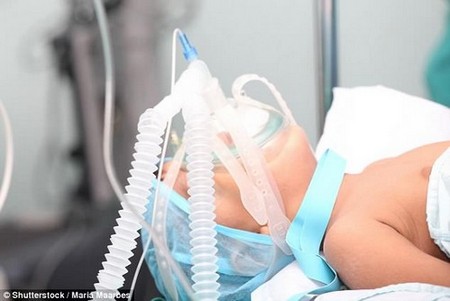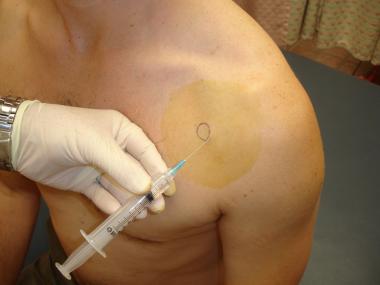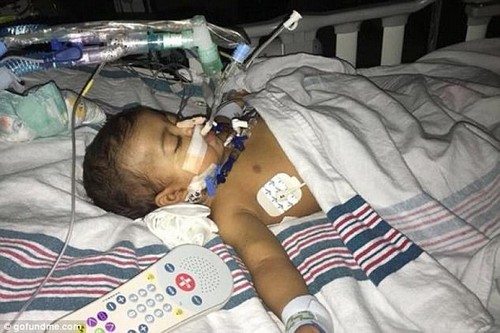Perforation of the stomach called the formation of through holes in the wall of this organ, which is accompanied by release of gastric contents into the abdominal cavity.
This pathological condition is not a separate disease, and is accompanied by a number of gastrointestinal and surgical diseases.
Perforation of the stomach observed in one person in 5 thousand of the adult population – this figure is considered high.
General data
This condition can complicate a disease of the stomach, but most often develops when gastric ulcer – every tenth patient of all who had put such a diagnosis. And among all the States, which complicates gastric ulcer, it occurs in 15% of all clinical cases.
Most victims are young men, who is of working age – from 20 to 40 years (although in the last 10 years the trend is that increasingly began to suffer at this pathology patients aged 50 years and older). In General, men have perforation of the stomach, for various reasons, occurs 15-20 times more frequently than women.

The peak of perforation of the stomach falls on the autumn and spring periods. This is explained by the seasonal exacerbation from peptic ulcers of the stomach – this is the diagnosis most often happens perforation of the stomach.

Violation of the integrity of the stomach for other, non-ulcer reasons is about 10% of all clinical cases, mainly affects school-age children and young people aged 20 to 30 years.
The occurrence of this disease is not only in itself creates problems, but also signals the fact of neglect of the disease is a bad diagnosis, or its complete absence
Reasons
Perforation of the stomach is most often found in such diseases and pathological conditions, such as:
- long-term current and periodically escalating gastric ulcer. Asking patients how long the ulcer has been observed, it should be remembered that in elderly ulcer history may not be as for a guy his age (60 to 70 years old, sometimes older) characterized by the erased clinical picture of the disease;
- shock;
- the abuse of alcoholic beverages;
- inappropriate and uncontrolled use of drugs of some pharmacological groups;
- overeating;
- long-term physical and psycho-emotional stress (although described cases of perforation of the stomach also against the background of sharp, lightning fast resulting ulcer due to severe stress situation);
- infectious agent – in particular, the presence in the cavity of the stomach of Helicobacter pylori. It should be remembered that this pathogen is found in 95% of patients with peptic ulcers, but ulcers sharp maximum in most cases are not in any way.
Factors that directly contribute to the perforation of the stomach in the place of the ulceration, is:
- the slow but persistent destruction of all layers of gastric hydrochloric acid produced by its cells;
- increased pressure in the gastric cavity;
- the presence of an infectious agent.
Selected diseases, against which most often occurs hole formation in the stomach. This:
- medicinal ulcers (in patients receiving drugs aggressively acting on the wall of the stomach);
- some endocrine disorders. The most revealing of these is the syndrome of zollingerellison – formation in the pancreas or 12-duodenum-specific tumor which produces gastrin – the hormone that stimulates the production of stomach pepsin, which increases the acidity of the gastric environment, and thus ulcerogenic (azwoobrazovania) action on the mucous membrane of the stomach;
- gepatogenna ulcers (occur in the background of shifts in the liver);
- pancreatogenic ulcers (formed in the pathology of the pancreas);
- acute ulcers of Crohn’s disease – granulomatous lesions of the entire gastrointestinal tract, including the stomach.
In addition, acute perforated ulcer of the stomach can be a complication of diseases of other organ systems – most often it is:
- acute myocardial infarction (mostly extensive);
- burn disease – changes in many organs and systems when you burn a certain location;
- stroke – the cerebral circulation in ischemic (oxygen deprivation) or hemorrhagic (bleeding in brain tissue) type.
The disease
Perforation of the stomach may occur in several forms is:
- a typical form – with her stomach contents (partially digested food, gastric mucus, gastric secretions) through a pathological aperture which is formed in the stomach wall, enters the abdominal cavity, falls to the surface of the parietal (lining inside the abdomen) and visceral (covering the abdominal organs) sheets of the peritoneum and starts the development of peritonitis;
- atypical form in the gastric wall, a perforation, but it is covered by the nearby organs and tissues. They can be: the greater omentum (the fatty apron hanging freely in the abdominal cavity and covering its organs), pancreas, left lobe of the liver, hinge thin (more often) or fat (rarely) of the intestine, folds of the mucous membrane of the stomach, a fragment of food;
- form with the development of penetration – the bottom of the perforation does not open into the abdominal cavity and rests on the adjacent organs, like the ulcer “creeps” on them – they, too, begins the process of tissue destruction.

Most often perforation of the stomach takes place in such locations of this body, as:
- front wall;
- rear wall;
- much curvature
- small curvature.
Symptoms
The clinical picture of perforation of the gastric wall are quite diverse and depends on the stage of this pathological condition.
During perforation of the stomach secrete three successive stages:
Stage of shock begins when, as the wall of the stomach bursts, and its contents falls to the surface sheets of the peritoneum.
The main clinical manifestations of this stage are the following:
- abdominal pain;
- deterioration of the General condition;
- the change in behavior of the patient.
Characteristics of pain:
- suddenness is unbearable pain, which patients describe as follows: “If in the stomach stabbed with a knife” – so it is also called stabbing pain;
- localization – for the first time occurs in the epigastrium (the upper floor of the abdominal cavity), and then quickly spread throughout the abdomen;
- for irradiation – basically anywhere not gives;
- strength – the strongest painful;
- the expression is a constant, increasing with the progression of pathological changes in the stomach due to irritation of the acidic gastric contents of the sheets of the peritoneum.
Have been the following changes in behavior of the patient:
- excitation;
- sick of rushing around, not finding a place, screaming.
Stage about the welfare comes in 6-7 hours from the onset of the disease. The patient gets better, the pain subside, and sometimes disappear altogether. This stage can last up to twelve hours, but mostly a few hours, then again the patient is getting worse.
After the stage of imaginary prosperity comes the inevitable deterioration in connection with the development stage of peritonitis. There are clinical signs of:
- increased pain in the abdomen;
- twilight state;
- the decrease in the amount allocated per night urine up to anuria (complete absence).
Atypical shape when formed in the stomach wall hole covered with fragments of adjacent tissues or food, the symptoms are the same, but less pronounced, because the acidic stomach contents can enter the abdominal cavity in limited quantities. Also irritation of the peritoneum may be limited if abdominal adhesions are many – they do not allow acidic stomach contents to spread throughout the abdomen.

For atypical forms with covered by perforation can be:
- briefly, when the object covering the hole in the stomach shifts, and atypical form are converted into conventional form of perforations;
- long – gastric contents enters the peritoneal cavity at one time, then from the stomach does not arise, as the hole closes nearby organs and tissues (this effect contributes to the rapid development of local peritonitis, when a large amount of fibrin, “taping” adjacent organs to stomach in place of the perforation).
Covered form of perforation of the stomach can flow much easier, in some cases even observed cures.
Complications
Typical complications of perforation of the stomach are:
- peritonitis;
- sepsis of the body;
- different types of shock (it is based on a marked disruption of the microcirculation of the tissues) – in particular, pain and septic.
Diagnosis
Symptom stabbing pain, spilled pain around the abdomen, rapid deterioration of the patient and peptic ulcer disease in anamnesis allows a high degree of certainty to the diagnosis of perforation of the stomach.
The diagnosis will help confirm the data of physical, instrumental and laboratory tests. Should be wary of covered perforation – when her symptoms may be blurred, and the diagnosis is wrong, but at any moment there may be a shift covering of organs or tissues, and stomach contents re-enroll in the abdominal cavity (despite the fact that the peritoneum has already been compromised).

At the stage of shock physical findings are the following:
- when viewed – even by the appearance of the patient is possible to note a rapid deterioration of General condition. In an attempt to alleviate the condition of the patient takes a forced position – lies on her side, presses the knees to the stomach (the so-called fetal position, which reduces stretching and irritation of the peritoneum). Skin and visible mucous membrane pale and moist, and the tongue remains moist, but slightly coated with white bloom, the amount of which in the progression of disease will increase;
- palpation (feeling) of the abdomen – there is a pronounced tension of the abdominal wall, severe pain throughout the abdomen, but the symptoms of peritoneal irritation are absent or poorly expressed;
- percussion (tapping) of the abdomen is also marked tenderness all over the abdomen;
- auscultation (listening with a stethoscope) of the abdomen – the data at this stage is less informative, although it may occur the weakening of peristaltic noise.
- when monitoring hemodynamics – pulse becomes more rare (and sometimes lower limit of normal, which has never been observed in a particular patient), the blood pressure is reduced.
At the stage of imaginary well-being physical findings are as follows:
- during the inspection – visually recorded that the patient gets better, he is more active already is not in the forced position may change position, but still covers the stomach. Skin and mucous membranes moderately pale, tongue moist, overlaid with a moderate amount of white residue;
- on palpation of the abdomen – the voltage slightly decreases, but there is gradually increasing swelling, pain is somewhat less than in the stage of shock;
- percussion – soreness around the abdomen;
- auscultation – peristaltic noises are drastically weakened and disappear, causes a state of “silent abdomen”;
- when monitoring hemodynamics – pulse rate increases, appear arrhythmias, blood pressure remains lowered (is almost at the same level as in the previous stage).
At the stage of peritonitis are determined by such data physical examination:
- during the inspection – it is very noticeable that the General condition of the patient deteriorates, the deterioration progresses. The patient is inhibited, the reaction to what is happening around slow. The swollen belly. Skin a distinctive earthy-gray color, covered with sticky to the touch then there has been a marked pallor of the visible mucous membranes. Tongue dry, covered with white, and with the progression of the disease – dirty coating;
- on palpation of the abdomen revealed a pronounced tension of the anterior abdominal wall (the surgeons say: “the Stomach as a Board”), soreness around the abdomen, symptoms of peritoneal irritation;
- auscultation of the abdomen peristaltic hums are absent. In rare cases, there may be individual sounds bowel sounds.

The main to confirm perforation of the stomach are the instrumental methods of diagnostics, namely:
- review fluoroscopy and -graphy of the abdominal cavity – it is possible to identify gas and effusion in the abdominal cavity, which appeared here due to the penetration of their stomach;
- ultrasound examination of abdominal organs (ultrasound) – it can be used to detect effusion in the abdominal cavity;
- esophagogastroduodenoscopy (EFGDS) – using an endoscope to visually detect the pathological hole in the wall of the stomach. FGDS should be careful in case of accidental contact with the endoscope into the lumen of the hole to widen it and not to aggravate the release of gastric contents into the abdominal cavity;
- diagnostic laparoscopy is performed if the diagnosis is in doubt, and in cases of suspected atypical (covered) perforation of the stomach;
- laparotomy – when unclear or blurred symptoms surgeons can do the autopsy the abdominal cavity for diagnostic purposes. Upon confirmation of the perforation laparotomy automatically becomes a normal medical operation, during which eliminate the hole in the stomach wall and the consequences of perforation.
Laboratory diagnostic methods are not definitive in the diagnosis of perforation of the stomach, but they are used in the complex diagnosis to get the big picture – apply:
- General analysis of blood – an increase in the number of leukocytes and ESR confirms the progression of the inflammatory process in peritonitis;
- the General analysis of urine – in cases of severe peritonitis the amount of urine decreases, specific gravity increases, in the urine erythrocytes and leukocytes.
Differential diagnosis of
Many of the symptoms that occur with perforation of the stomach, characteristic of other diseases and conditions that are part of a group of pathologies of the acute abdomen. Differential (distinctive) diagnosis of perforation of the stomach should be carried out with such pathologies as:
Also perforation of the stomach it is necessary in some cases to distinguish from diseases is not only digestive, and other systems – most often it is:
- rupture of the aneurysm (bulging) of the abdominal aorta;
- myocardial infarction;
- lower lobe pneumonia or pneumonia with another localization with pneumothorax (breakthrough of air in the pleural cavity) or pleurisy (inflammation of pleural sheets).
Treatment
If perforation of the stomach of the patient hospitalitynet urgently to the surgery Department where it is prepared for surgical intervention.
Conservative therapy is also used – its purpose:
- preparing the patient for surgery;
- correction of the violations that occurred in the body due to peritonitis.
The basis of conservative therapy is based on the following assignments:
- hunger;
- production of a nasogastric tube for removal of stomach contents;
- massive infusion therapy is intravenously administered saline, electrolytes, glucose, protein preparations, blood components (fresh frozen plasma);
- antibiotic therapy – to prevent the consequences of infection of the peritoneum, and if it really is developed to eliminate them;
- hormones – they are used for circulatory disorders that may develop due to the shock of the patient.
The purpose of the operation is to stop the flow of gastric contents into the abdominal cavity.
When perforation use methods of surgery, like:
- suturing the openings of the stomach. Occurs when the acute ulcer, when was observed a long lingering for peptic ulcer disease and, therefore, no pronounced changes in the stomach wall. Suturing is also carried out in elderly patients when a more advanced volume operations threat (due to surgical and anesthetic risks);
- excision of edges of ulcer and suture holes;
- if there is ulcer history, in addition to suturing of the perforation or excision with suturing of the edges of the ulcer, perform the intersection of the vagus nerve, thus decreasing acid production in the stomach and the risk of subsequent development of peptic ulcer disease;
- if the perforation is caused by significant changes due to prolonged peptic ulcer disease, perform a partial removal of the stomach;
- if you had a perforated ulcer in the end, the pyloric stomach, then a plastic.
Lately, the growing popularity of endoscopic treatment of this disease, when through a small hole in the abdominal wall into the abdominal cavity impose an endoscope and perform a tamponade (a cover) of the hole formed in the gastric wall.
If perforation of the stomach caused by peptic ulcer disease, after surgery, should more carefully examine the patient and prescribe conservative treatment of peptic ulcer disease.
It is based on:
- diet;
- antibiotic therapy aimed at the eradication of Helicobacter pylori;
- cancel of non-steroidal anti-inflammatory drugs, which provoke the formation of ulcers of the stomach;
- enveloping drugs that protect the gastric mucosa against aggressive factors.
Such treatment necessary to prevent re-perforation of the stomach wall.
Prevention
The basis of prevention of perforation of the stomach is the so-called secondary prevention – i.e., prevention of all diseases and conditions that may be complicated by perforation of the gastric wall.
The first thing to beware of:
- gastric ulcer;
- alcoholic lesions of the gastric wall;
- incorrect use of certain medication (primarily nonsteroidal anti-inflammatory);
- prolonged mental and emotional stress.
You should also stop Smoking, since nicotine robs the tissues of the stomach, and impairs their blood supply, and thus the ability to regenerate (to restore).
Patients with gastric ulcer should be at the dispensary and to undergo periodic examination by a gastroenterologist.
Forecast

The prognosis in perforation of the stomach wall is always serious, as the changes of the peritoneum due to the action of acidic contents of the stomach it comes quickly, besides, deterioration of the General condition of the organism is exacerbated by a painful shock. The delay in the correct diagnosis affects the chances of the patient.
At the age of 20-45 years mortality due to perforation of the stomach is from 1 to 5%. In elderly patients, this figure may increase several times.



